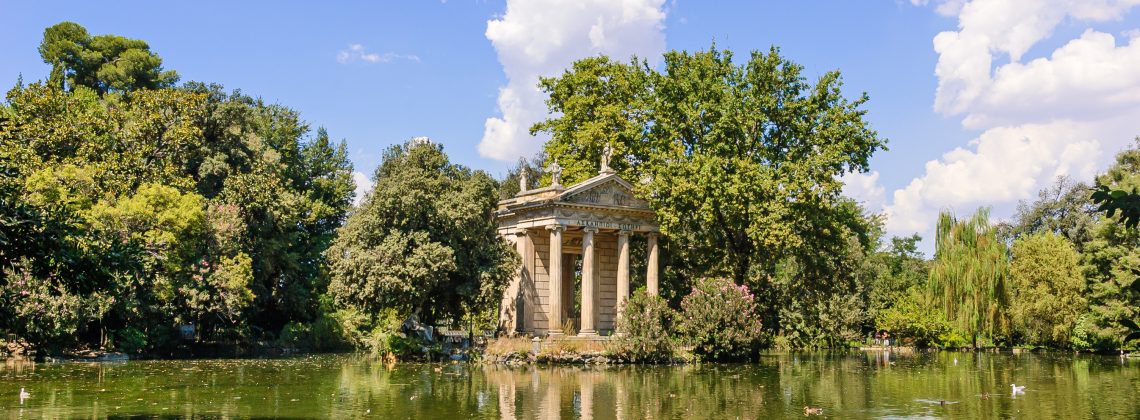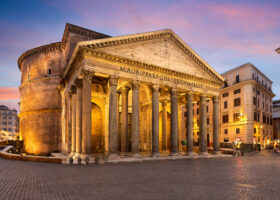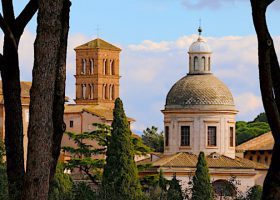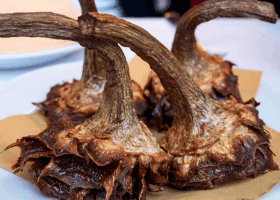Tourists think Villa Borghese is just another sightseeing spot, but local Romans actually love it—it’s their green backyard. With its heart-shaped layout and locals lounging, picnicking, or strolling, it’s where the Romans escape the crowds and soak in the beauty of the city. I’m sharing everything you need to check out at Villa Borghese.
Pro Tips:
- Planning what to do on your trip to Rome? Bookmark this post in your browser so you can easily find it when you need it.
- See our guide to Rome for more planning resources.
- Check out our best private Rome tours for a memorable trip.
- Review our guide on how to see Rome in a day.
Everything You Need to Know About Villa Borghese
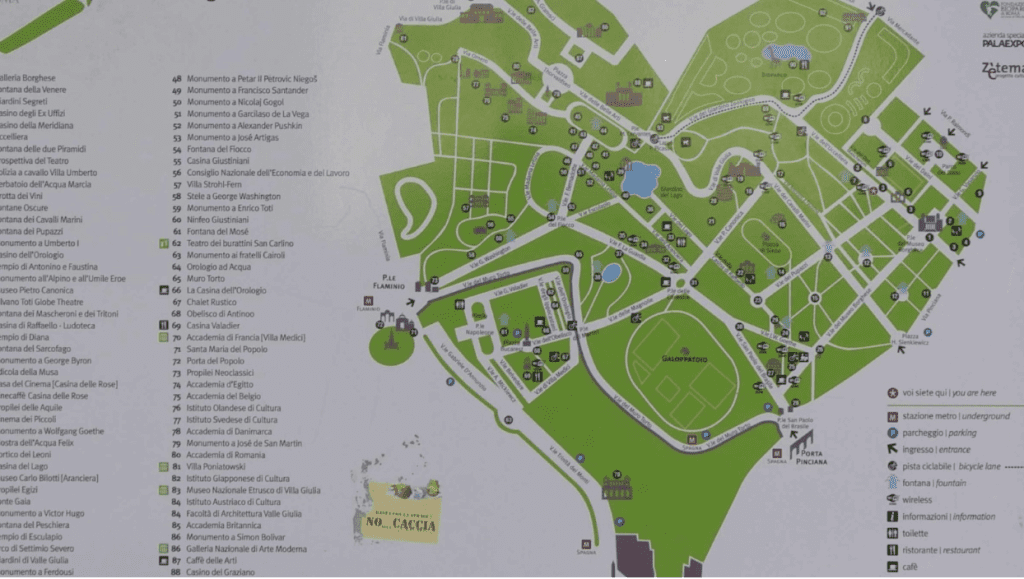
People always think of Villa Borghese as just another tourist stop, but let me tell you, as a Roman, it’s our spot. I’m talking about the kind of place that isn’t just for the photo ops — it’s a piece of the city that actually matters to us.
If you look at it on a map, you’ll see Villa Borghese is shaped like a heart—a fitting look for a park that’s cherished by locals. It’s the kind of park you’d expect to find in a city like Rome, not just some generic tourist trap.
Nestled between the chic Parioli and Pinciano neighborhoods, it’s basically our massive backyard — 200 acres of lush green space where we do everything from strolling and picnicking to just kicking back and soaking it all in.
While most tourists are too busy checking off their bucket lists, we’re the ones who know that Villa Borghese is where the city comes alive. We’re here strolling, picnicking, or just relaxing in one of Rome’s most beautiful parks. So, if you want in on the secret, I’m about to share all the tips you need to experience it like a local.
Address: 00197 Rome
- Hidden spots in the park you won’t find on maps
- Must-see art in the park
- Where to get the best views in the park
- How to do Villa Borghese like a local
- Where to eat nearby
- How to get to Villa Borghese
The Hidden Spots That Tourist Maps Don’t Show
The World’s Tiniest Cinema
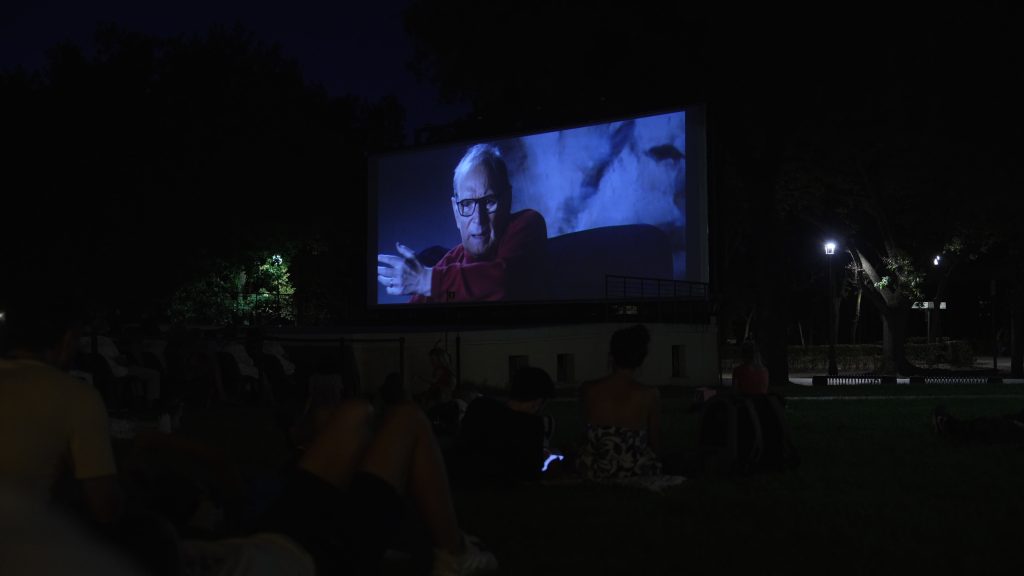
If it’s too cold to catch one of the park’s summer outdoor screenings, I head straight to Cinema dei Piccoli. This tiny gem, officially the world’s smallest movie theater, has been around since the 1930s and feels barely bigger than a Roman apartment.
I love ducking in for an afternoon showing—it’s like having my own private screening room tucked away in Villa Borghese.
Address: Largo Marcello Mastroianni, 15
The Secret Lake
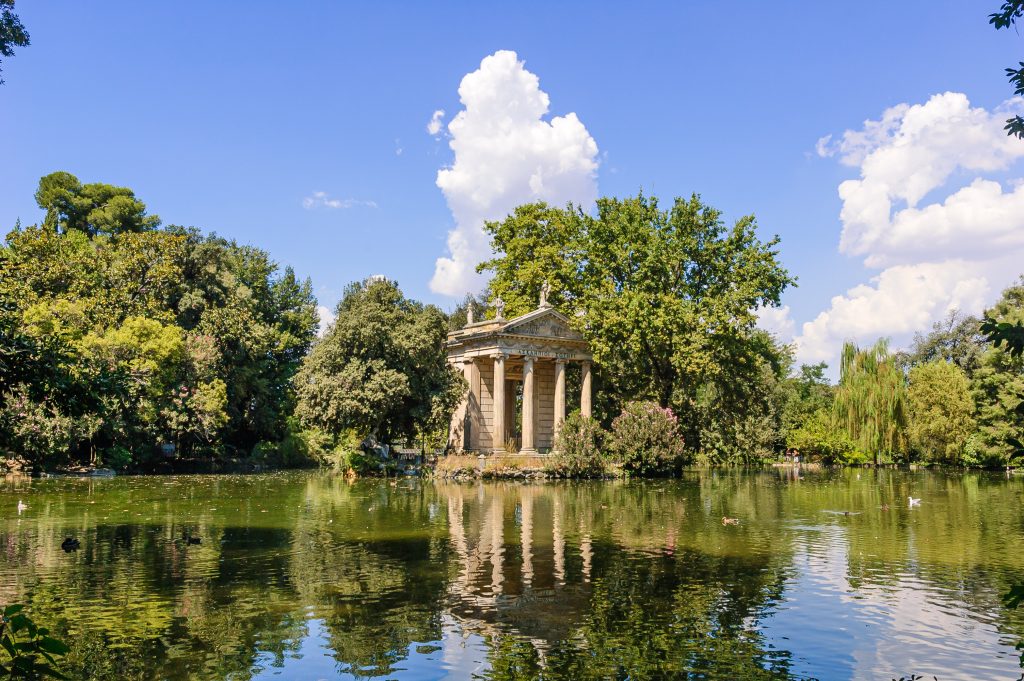
Instead of braving the crowds at Trevi, I love heading to Giardino del Lago. This hidden lake in Villa Borghese has rental rowboats and an 18th-century temple perched on a tiny island—it feels like a world apart from the busy city.
Most tourist maps don’t even show it, which is exactly why we Romans cherish it. For just 3 euros, you can row around the Temple of Asclepius, imagining what it must’ve felt like for Italian nobility back in the day.
Late afternoon, especially after 4 PM, is my favorite time to go; the golden light on the water makes it feel like a true escape.
Address: 00197 Rome
The Forgotten Museum
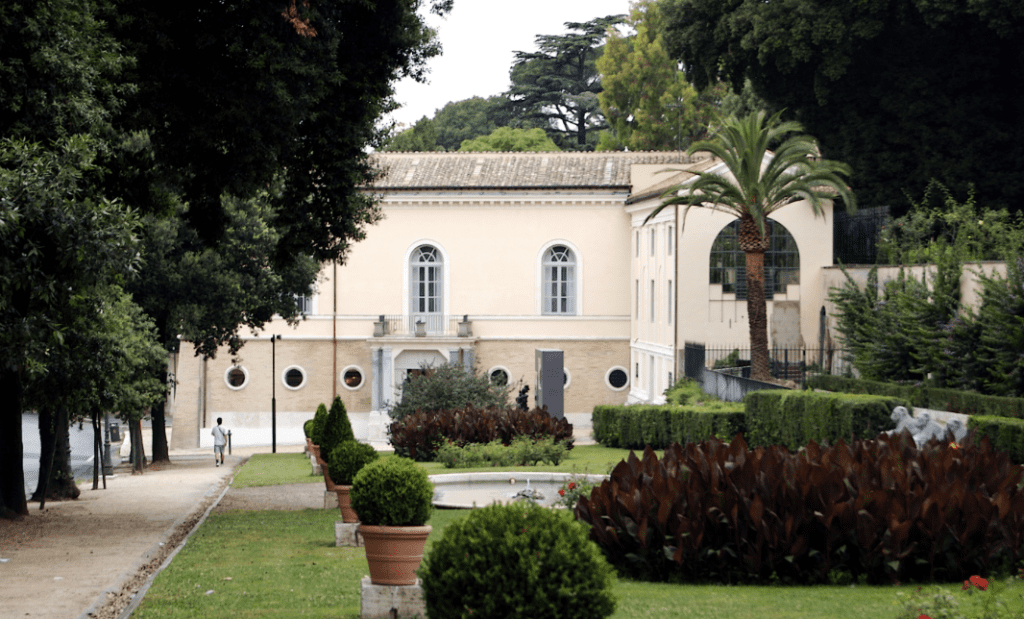
While everyone packs into the main gallery, I like to slip over to Museo Carlo Bilotti, a hidden gem in Villa Borghese. Tucked away in the park’s old orangery, this free museum holds a surprising collection of De Chirico paintings and even a Warhol—pieces you’d never know were there if you relied on most guidebooks.
A fun fact: Carlo Bilotti, the museum’s namesake, was an Italian-American businessman and art collector who was friends with many of the artists featured here. The real secret, though, is the quiet garden café outside.
Address: Viale Fiorello La Guardia, 6
See Beyond the Obvious Art
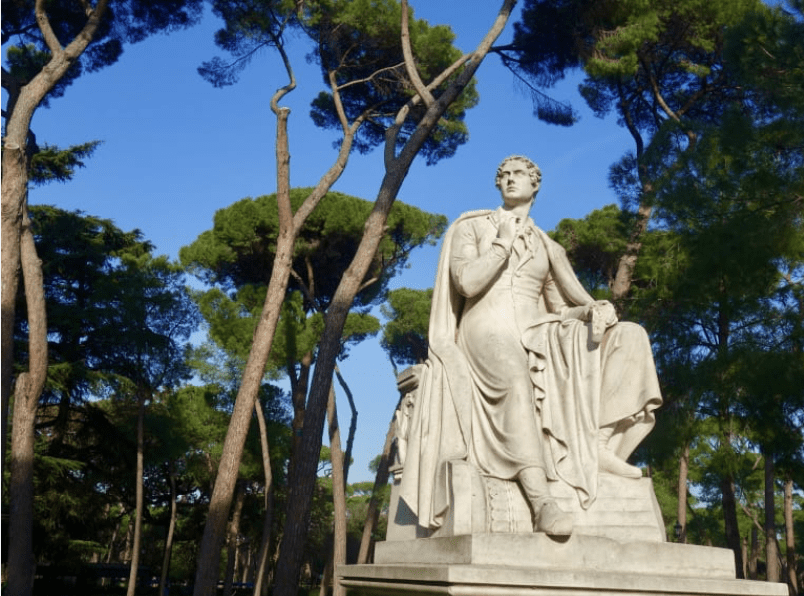
Everyone knows about Bernini at the gallery, but the park itself is full of art most visitors miss. You’ll definitely want to add these to your itinerary while you’re visiting the park.
The watercolor museum that used to be a henhouse
Yep, you read that right. Back in the day, this was part of the Borghese family’s private estate, and apparently, the chickens didn’t mind living in a place with such a prime location in one of Rome’s most iconic parks.
Fast forward a bit, and the space was transformed into the Museo dell’Acquarello (Watercolor Museum), dedicated to—you guessed it—watercolor art.
The collection is dedicated to showcasing the delicate art of watercolor, with works from both Italian and international artists.
Contemporary sculptures hidden in the English gardens
Most people just breeze through the park, snapping pictures of the fountains and the classic views, but if you’re in the know, there’s a whole other layer of Villa Borghese that’s worth discovering.
Tucked away in the lush, peaceful corners of the Giardino Inglese (the English Garden), you’ll find a collection of contemporary sculptures that’ll make you stop in your tracks.
It’s like the park’s little secret. While the rest of Villa Borghese is all classical statues and baroque charm, the English Gardens throw a modern twist into the mix.
The sculptures are bold, edgy, and not the kind of thing you’d expect to see in a place like this.
The replica of Shakespeare’s Globe that hosts Italian theater
This stunning wooden structure sits tucked away in the heart of Villa Borghese’s lush greenery, and it serves as a stage for some of the best Italian theater performances you can catch in the city.
What makes it stand out? Well, for one, the setting. Imagine Shakespeare’s plays—or more modern Italian works—being performed in an open-air theater, surrounded by nature, with the crisp Roman air filling your lungs.
Where to Find the Best Views in the Park
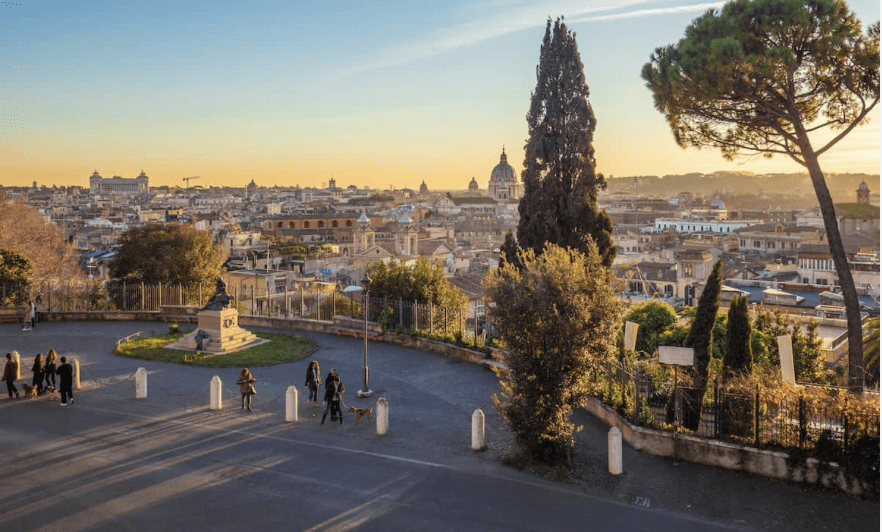
Everyone talks about the Pincio terrace—and yes, the view of Piazza del Popolo is stunning. But here are my favorite spots to get the perfect shot:
- The hidden terrace behind Casina Valadier. There are fewer selfie sticks and much better sunset views.
- The quiet path along the back of Villa Medici. You can see St. Peter’s without the crowds.
- The secret spot behind Villa Borghese’s water clock. Photographers camp here at golden hour.
How to Do Villa Borghese Like a Local
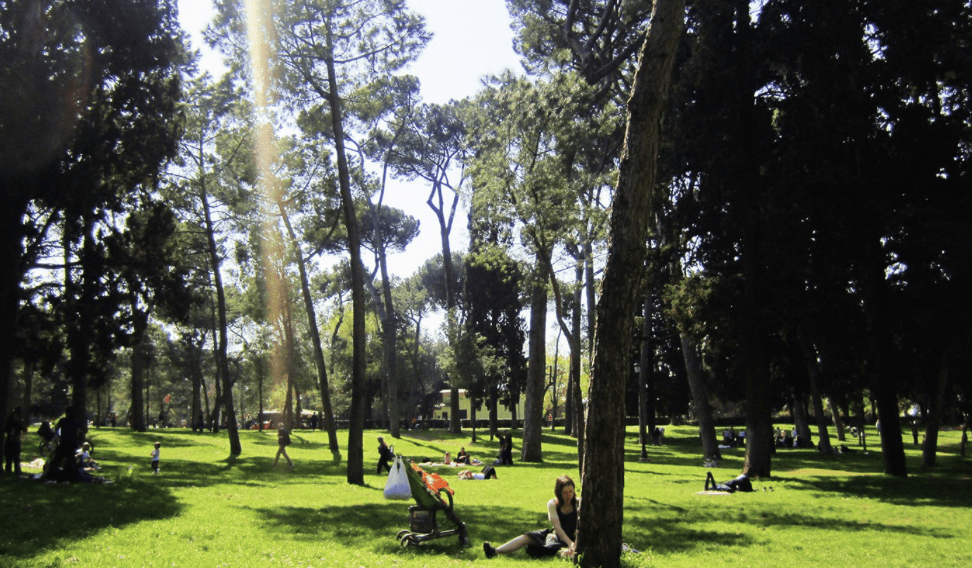
Plan a Picnic
Skip the overpriced cafes. Do like the Romans:
- Hit the market on Via Flaminia for fresh bread and cheese.
- Grab wine from the tiny enoteca near Via Pinciana.
- Find a quiet spot near the Villa Giulia.
Time It Right
- Early morning: Join the local runners and artists.
- Midday: While tourists bake in the Forum, you’re in the shade of umbrella pines.
- Sunset: The Pincio terrace gets crowded, but the paths behind Villa Borghese offer equally stunning views without the selfie sticks.
Use the Back Ways In
In addition to the main entrance at Porta Pinciana, you can also try these other entrances:
- The quiet steps up from Via Veneto.
- The secret entrance near the Bioparco.
- The back gate by Villa Giulia.
During the summer, there’s nothing better than grabbing some friends or coworkers, a picnic blanket, and a bottle of wine, and heading to Villa Borghese for the outdoor film screenings.
They show everything from classic Italian films to international releases.
I love settling in with some snacks. It’s one of my favorite ways to spend an evening in the park and it’s free! Check out the schedule to plan your night.
Where to Eat Nearby
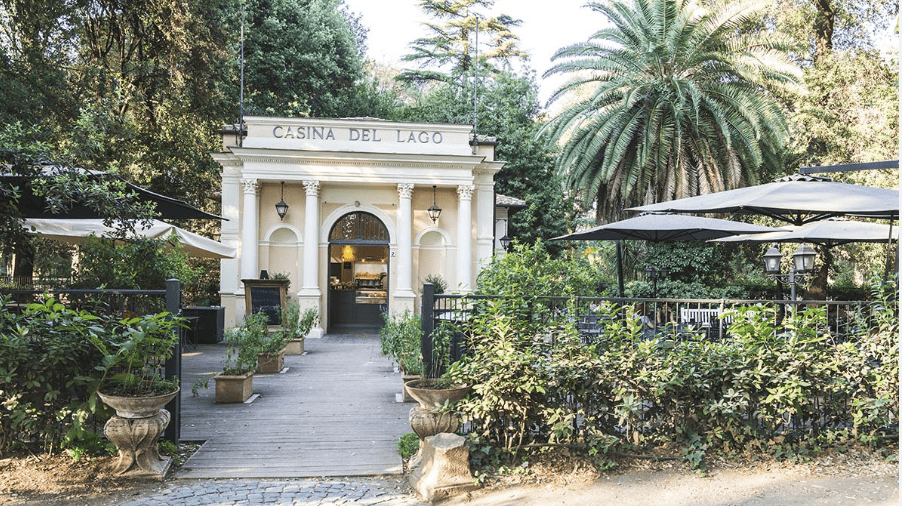
Forget overpriced tourist cafes. Here’s where locals actually eat and drink in the park:
- Casina del Lago. A lakeside aperitivo spot where Romans linger over Aperol Spritz.
- La Casina dell’Orologio. That little cafe by the water clock? It’s where art students and writers camp out all afternoon.
Pro tip: The kiosks near the main paths are mediocre. The good spots are hidden—like that tiny wine bar tucked into an old gatehouse near Villa Giulia. Ask for the house white and whatever pasta they made that morning.
For more foodie tips, check out our guide on the top foods to try in Rome.
How to get to Villa Borghese
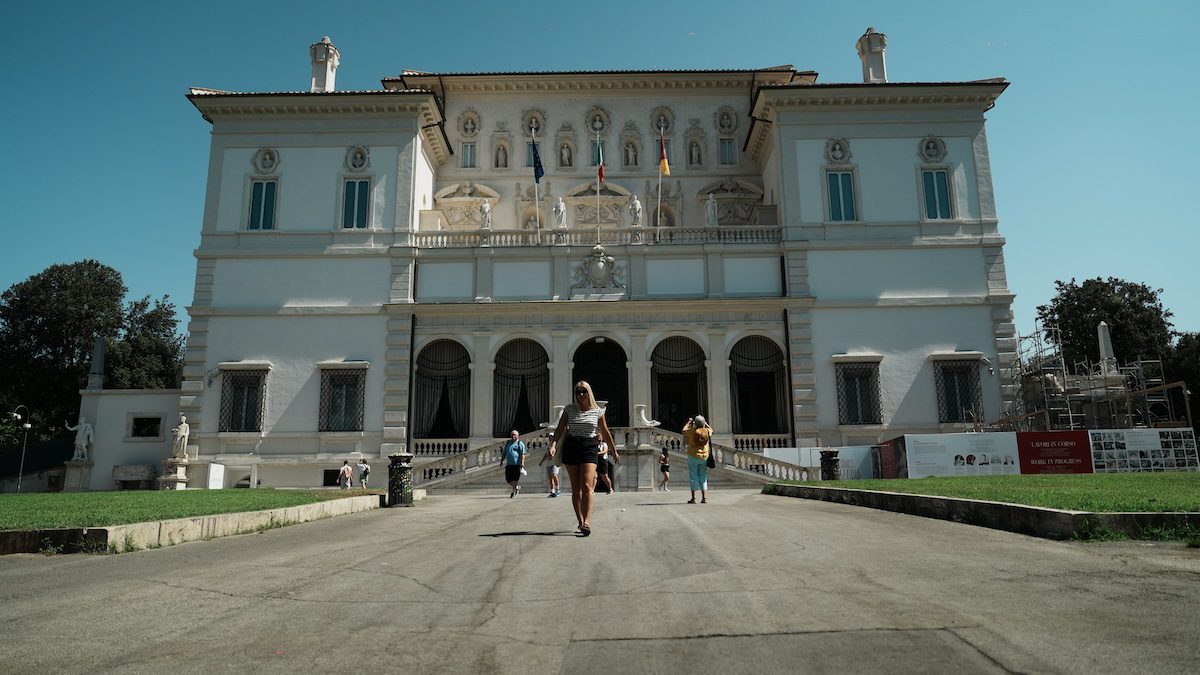
Villa Borghese sits above the historic center of Rome, between Piazza del Popolo and Via Veneto. The park spans 200 acres above the Spanish Steps.
By Metro
- Line A: Flaminio or Spagna stations
- Follow signs to Villa Borghese (10-minute walk)
By Taxi or Car Service
Tell your driver:
- “Galleria Borghese” for the museum entrance
- “Hotel de Russie” for the Popolo entrance
- “Via Veneto” for the southern entrance
By Foot
Main entrances:
- From Spanish Steps: Walk up Via Sistina
- From Via Veneto: Enter through Porta Pinciana
- From Piazza del Popolo: Use the stairs to Pincio Terrace
By Bus
- Lines 61, 89, 160, 490
- Stop: Pinciana/Museo Borghese
The Galleria Borghese museum is located in the center of the park. Remember that entry requires advance reservations.
Getting Art Smart at Galleria Borghese
So you’ve seen the park, now you’re ready for more art. It’s time to visit Galleria Borghese. And if you actually want to understand what you’re looking at in Galleria Borghese (and not just pretend to), book a tour.
You’ll want someone to explain why that Cardinal spent a fortune on statues of his sister turning into a tree. Trust us, it’s a better story than you think.
Let’s address the obvious: yes, Galleria Borghese is spectacular. Those Bernini sculptures and Caravaggio paintings aren’t overhyped. But showing up without a plan means joining the hordes waiting outside.
Smart travelers book a morning slot with a guide who can get them past the lines and explain why that Apollo and Daphne sculpture was basically the 1600s version of a viral sensation.
(We’ve got a pretty great tour that does exactly that, but honestly, just make sure you book something in advance—the gallery’s strict entry rules mean you can’t just walk up and buy a ticket).
Once you’ve finished your tour, you’re going to want to make time to visit the gardens.
Not ready to book a tour? Find out if Borghese Gallery tours are worth it.
Most visitors leave Villa Borghese thinking they’ve seen a nice park with a famous gallery. But now you know—this isn’t just Rome’s central park. It’s where locals have been escaping tourist crowds for 400 years.
They just don’t usually tell visitors how to find all their favorite spots. Lucky for you, we don’t like gatekeeping Rome’s hidden gems.
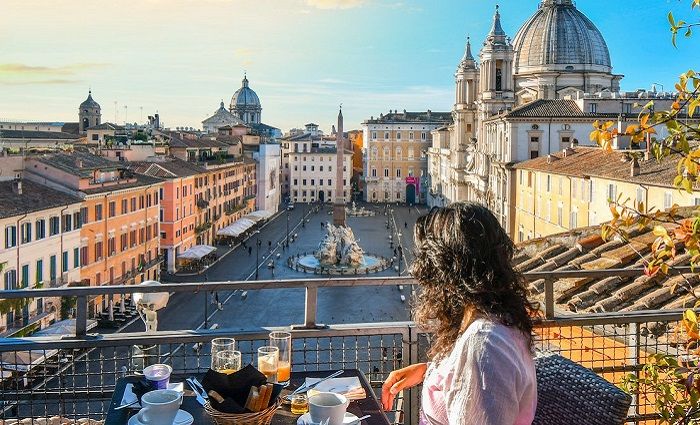
Where To Stay in Rome
Rome has a rich cultural history and many iconic landmarks to explore. Plan where to stay in the magnificent Eternal City in the best neighborhoods.

